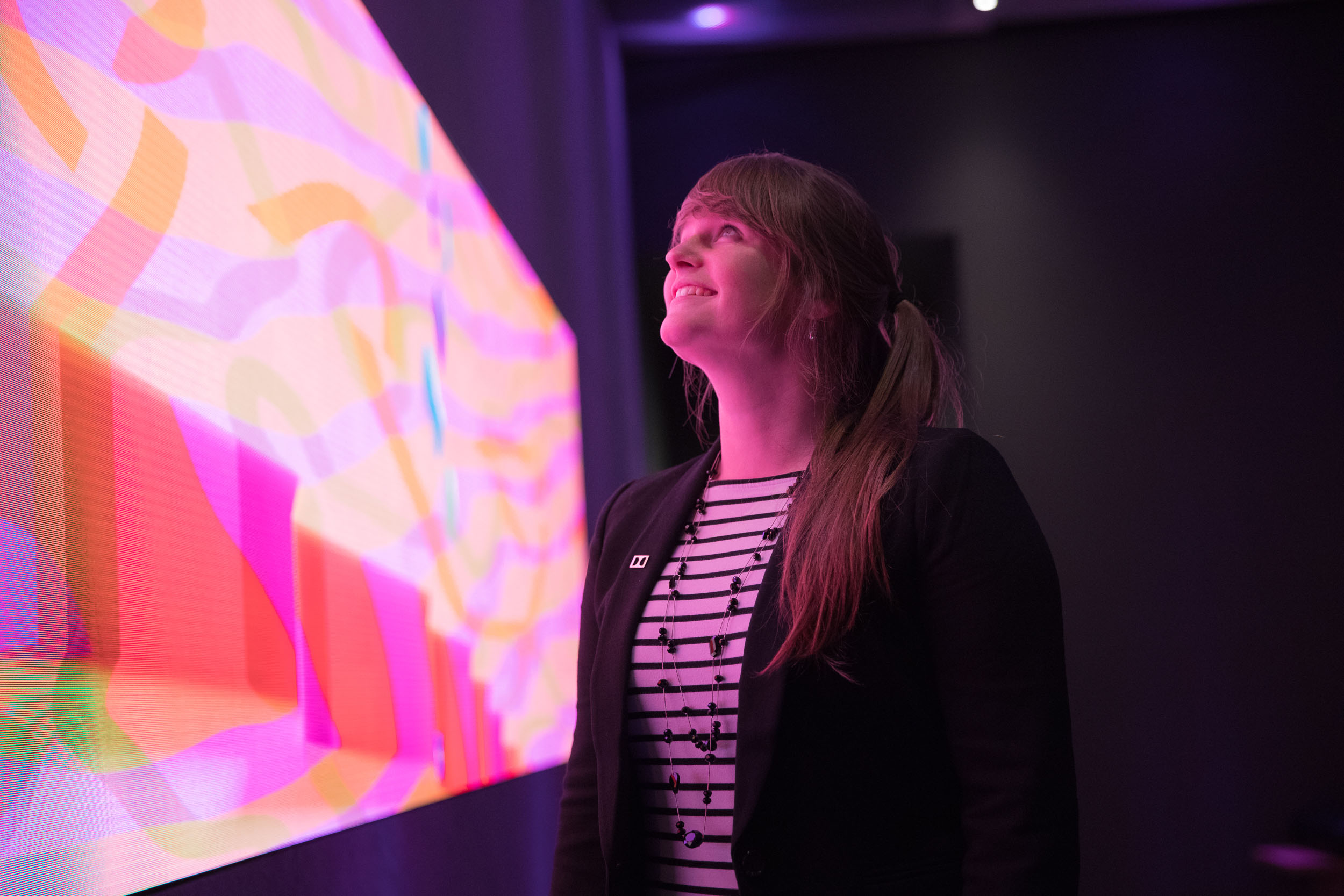Alumna claims second Engineering, Science and Technology Emmy Award
Jaclyn Pytlarz is a senior staff researcher who leads Dolby's Vision Science team.
The striking detail that today’s consumer TVs display is the result of an innovative process heavily influenced by Jaclyn Pytlarz ’14 (motion picture science).
For years as a Dolby Laboratories researcher and engineer, Pytlarz has played a central role in developing the latest high-dynamic range (HDR) technology. HDR refers to imaging technology that results in brighter highlights, better contrast and more vivid colors. The technology, by revealing maximum detail in both bright and dark scenes, generates natural-looking picture quality.
Pytlarz and the years-long HDR research conducted within the International Telecommunications Union (ITU) group was recognized with a 2023 Engineering, Science and Technology Emmy Award for the “standardization of high dynamic range television.”
“I’m honored to be involved with some important organizations and groups, so getting this award is confirmation of that work well done,” Pytlarz said.
The ITU is a United Nations specialized agency consisting of professionals around the world on the cutting edge of information and communication technologies.
Pytlarz has represented the United States as an ITU member for nearly 10 years, working toward the HDR standardization that greatly improved the TV industry, from cameras to color processing to consumer products.
The international specifications she and ITU peers established have enabled HDR to become widely practiced and enjoyed by consumers. Much of Pytlarz’s research centered on human perception and color science.
“One of my main contributions to that standardization was the inclusion of a new type of encoding color space,”said Pytlarz, a senior staff researcher who leads Dolby’s Vision Science team. “The research involved creating a way to encode this new high-dynamic range content the most efficient way possible; the most efficient we can aim to be is to model human perception.”
Jaclyn Pytlarz
For one human-focused HDR experiment, Pytlarz studied a group of more than 200 Dolby employees in multiple cinemas and tested how they differentiated colors. Those results of how humans perceive color helped power the Emmy-winning research.
“We designed the experiment into a game-type style where the participants got scores. That competitive nature made the experiment fun for participants and helped spread the word,” Pytlarz said. “That data was then used to create the color spaces and systems that we used to standardize HDR-TV.”
This is Pytlarz’s second Engineering, Science and Technology Emmy Award. In 2021, she was on the Dolby Laboratories team that received the Philo T. Farnsworth Corporate Achievement Award for its pioneering Dolby Vision and Dolby Atmos technology.
Dolby Vision unlocks the full potential of HDR by dynamically optimizing the image quality based on an individual's service, device and platform. The resulting picture is displayed precisely how content creators intended. For the consumer, entertainment in Dolby Vision has richer colors and brighter contrasts, revealing details that would otherwise get lost without it.
It is a harnessing of a technology Pytlarz had a key role in developing. She was responsible for the color mapping and display management algorithms that maintained directors’ creative intentions on countless screens.
Pytlarz’s work has taken her all over the world. She traveled to South Korea to help LG implement one of her algorithmic designs. She has also presented research at the Consumer Electronics Show, a mega showcase of technology and innovation.
With HDR technology deployed so widely, Pytlarz and her team have started shifting toward new objectives. Today, Pytlarz steers Dolby’s Vision Science team, which designs novel image processing algorithms specializing in perception and color science as they relate to HDR, wide color gamut images and human perception.
“We take inspiration from human perception to design state-of-the art novel algorithms and deliver spectacular experiences,” Pytlarz said.
“We’re at a point where HDR is finally starting to saturate the consumer market,” she added. “So now we are back to the core research to figure out the next big thing. We are exploring a lot of things, which is a fun opportunity to delve into new areas that are showing a lot of promise.”














